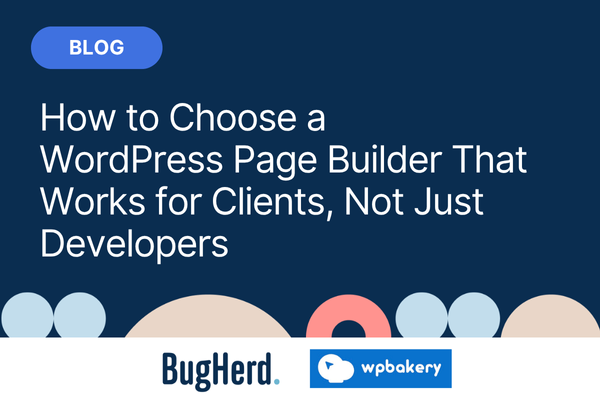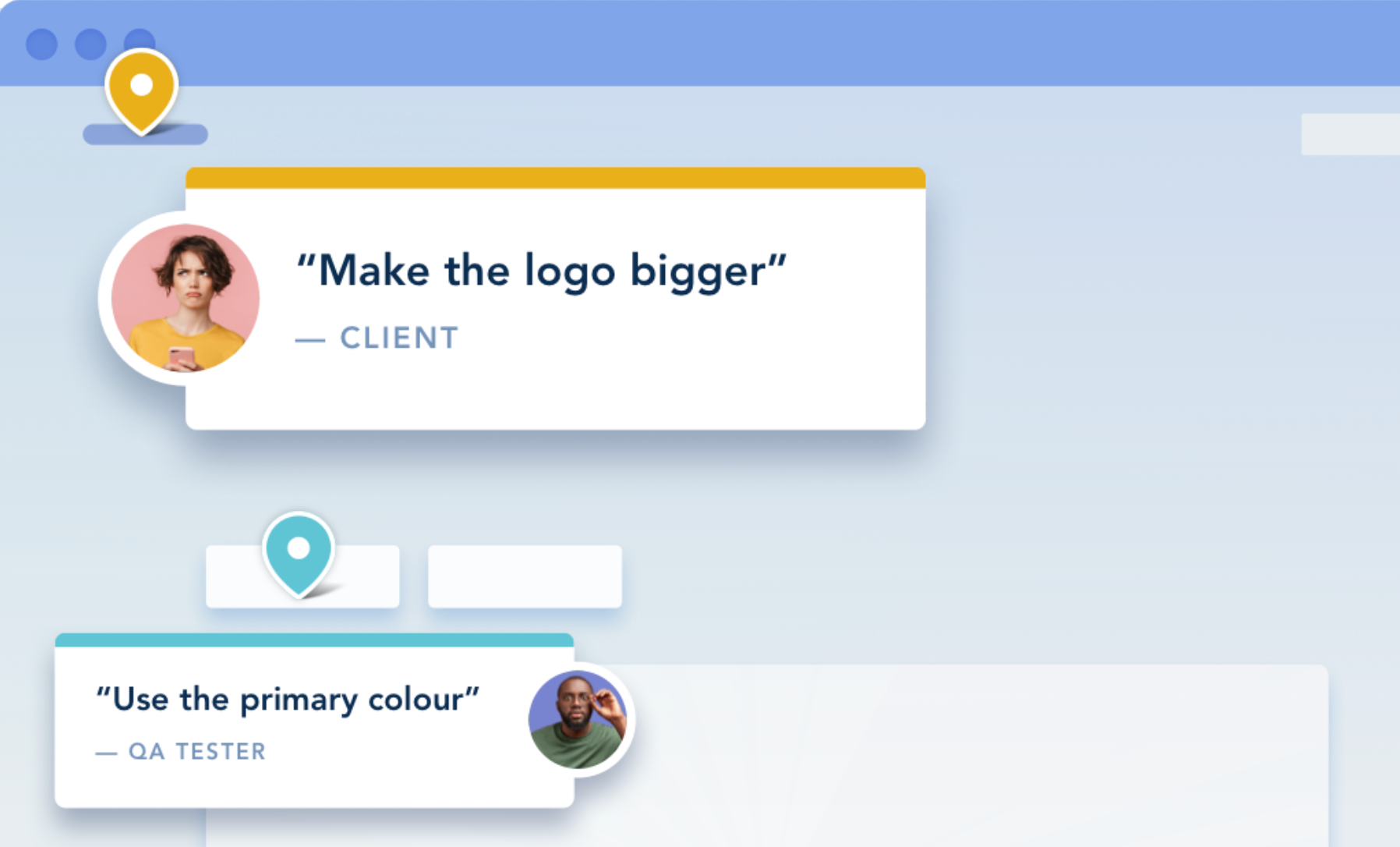We caught up with the team from WPBakery at WordCamp, and it was clear: there’s a growing focus on tools that serve both developers and clients. Choosing a WordPress page builder used to be a decision made by developers based on their own workflow. But in 2025, agencies are asking a more important question.
“Will my client be able to use this tool after we hand over the site?”
If you’ve ever been pulled into a “quick change” request that turned into a 30-minute call, a string of emails, and a shared screen just to move a button, you’re not alone. Agencies everywhere are losing valuable time dealing with post-launch edits that could have been handled by the client, if only the builder had been easier to use.
Why Agencies Are Prioritizing Client Experience
Clients want to be able to update content, add sections, and make changes without having to call their developer every time.
Agencies that support this expectation are seeing:
- Fewer support tickets
- More confident, satisfied clients
- Time saved on minor requests
- Stronger referrals and retention
In short, choosing a client-friendly website builder saves time and improves project margins in the long run.
What to Look for in a Page Builder in 2025
When selecting a page builder, here are four key criteria to evaluate.
- Client usability: Can a non-technical client confidently make updates on their own?
- Developer control: Does the tool allow your team to build fast, use templates, and implement custom code where needed?
- Code performance and SEO: Does the builder generate clean code and avoid unnecessary bloat?
- Support burden: Will your team spend less time helping clients use the builder, or more?
Page Builder Comparison: Agency Perspective
Below is a comparison of a number of leading website page builders based on recent G2 user reviews and real-world usage insights from digital agencies. Rather than focusing on pre-launch features or visual design tools, it evaluates what matters most once the website is live, and reflects the priorities of agencies who manage not just website builds, but long-term client relationships.
Sources:
WPBakery, Elementor, Divi, Beaver Builder
Where WPBakery Fits In
WPBakery is a popular choice among agencies. It offers both back end and front end editing modes, and this lets developers build with full control whilst giving clients a visual interface that is easy to learn.
Here’s what we like about WPBakery:
- Clients can learn it quickly
- Reusable content elements and templates support consistent design
- Advanced and ‘unbreakable’ layouts are well supported
- Shortcodes to embed and extend features and functionality
WPBakery is very easy to extend! You can create custom Content Elements their clients can 'drop' into a page's layout. AI is making this a breeze too - just prompt your favorite AI tool to generate code for the layout or function you need, and install it as a plugin.
Alternatively, you can also extend WPBakery by installing one of over 250 add-ons available.
Watch WPBakery in action
Why Builder Usability Isn’t Enough
Even the best page builder won’t fix one common problem faced by web developers - unclear feedback.
You’ve probably seen it before:
“Can you move the blue section up a bit and make the text bigger? Also, the image on the About page should be the other one we discussed.”
Now you’re searching through layouts, trying to figure out which blue section they meant and which image they’re referring to.
This is where your choice of feedback tool matters just as much as your builder.
The Role of Visual Feedback in a Modern Workflow
BugHerd is a website feedback tool that makes getting client feedback on websites easy. Clients simply pin comments directly to elements on a live site, BugHerd grabs a screenshot and user technical details, and then creates a task for teams to manage. It replaces email chains, spreadsheets and annotated screenshots with clear, contextual requests.
With BugHerd, you get:
- Visual comments tied to exact page elements
- Screenshots, page URLs, and technical metadata included automatically
- Easy task management in one central place for client feedback
Agencies using BugHerd report fewer rounds of revisions and more efficient feedback cycles.
WPBakery and BugHerd both recognize that most website users are not technical - they simply want to get a job done with minimal effort. Developers want this too, but they also need clear and timely instructions.
BugHerd makes this easy, and just like WPBakery, you can be up and running in minutes. I call this ‘zero-effort collaboration’... and both developers and their clients love it. - Lawrence Ladomery, Marketing Specialist, WPBakery
A Better Workflow from Build to Handoff
When you pair a client-friendly builder like WPBakery with a visual feedback tool like BugHerd, you create a workflow that is efficient and scalable.
- Keep BugHerd live for future feedback and updates
- Build the site using WPBakery’s backend editor
- Share the staging link and collect client feedback with BugHerd
- Refine content and layouts based on visual comments
- Train clients on WPBakery’s intuitive frontend editor
This stack saves your agency time while giving clients a great experience, giving them full control of their website layout for the future, with feedback capability from the rest of their team.
Final Thoughts
The best agencies in 2025 are not just choosing the most powerful tools. They are choosing tools that clients can actually use, long after the handoff.
WPBakery is one of several builders that helps bridge the gap between developer flexibility and client autonomy. Paired with BugHerd, it creates a complete system for collaborative building, easy feedback, and long-term support.
Key Takeaways
- Choose tools that your clients can use, not just your developers
- A builder’s learning curve directly affects your support burden
- Visual feedback systems reduce revision rounds and confusion
- Combining WPBakery and BugHerd creates a clear, scalable workflow
What sets great agencies apart is what happens after launch. Choose tools that support that journey from the start.
Try BugHerd free today or book a 1:1 demo


















But don't just take our word for it.
BugHerd is loved by 10,000+ companies,
350,000+ users across 172 countries.
4.8/5
4.7/5
4.5/5
5/5
8.7/10
Sam Duncan 📱📏 🌱
@SamWPaquet
"@bugherd where have you been all my life??
We just migrated our bug tracking over from Asana and have at least halved our software testing time🪳👏📈. "
Ashley Groenveld
Project Manager
“I use BugHerd all day every day. It has sped up our implementation tenfold.”
Sasha Shevelev
Webcoda Co-founder
"Before Bugherd, clients would try to send screenshots with scribbles we couldn't decipher or dozens of emails with issues we were often unable to recreate."
Mark B
Developer
“A no-brainer purchase for any agency or development team.”
Kate L
Director of Operations
"Vital tool for our digital marketing agency.”
Paul Tegall
Delivery Manager
"Loving BugHerd! It's making collecting feedback from non-tech users so much easier."
Daniel Billingham
Senior Product Designer
“The ideal feedback and collaboration tool that supports the needs of clients, designers, project managers, and developers.”
Chris S
CEO & Creative Director
“Our clients LOVE it”
Emily VonSydow
Web Development Director
“BugHerd probably saves us
at least 3-4hrs per week.”